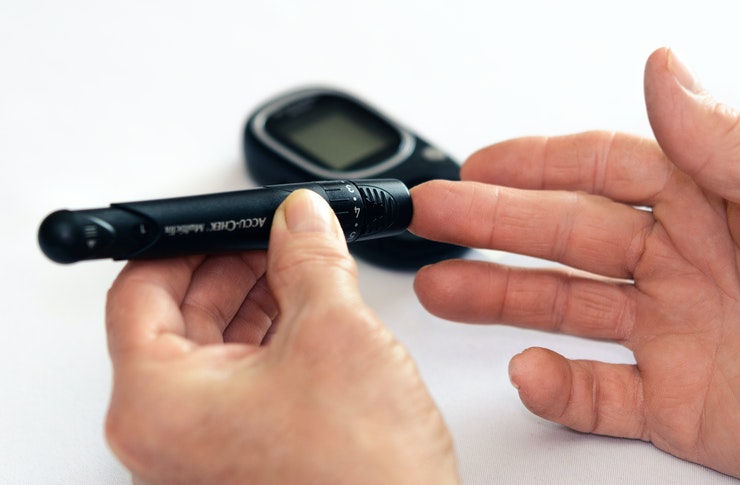Best Glucose Monitors Covered by Insurance: What to Know Before You Choose
Many insurance plans now include glucose monitors as part of diabetes care, but coverage varies by provider and device type. This article explains how insurance coverage for glucose monitors works, which features to consider, and what steps to take to verify eligibility.

Selecting a glucose monitor is an important decision for anyone managing diabetes, but the financial aspect can be just as critical as the device’s features. Insurance coverage for glucose monitoring devices has expanded in recent years, yet navigating the specifics of what your plan includes requires careful research. Understanding how coverage works, what influences which devices are included, and how to verify your benefits can save you considerable time and money while ensuring you get the technology you need.
How Insurance Coverage for Glucose Monitors Works
Insurance coverage for glucose monitors typically falls into two categories: traditional blood glucose meters and continuous glucose monitors (CGMs). Most health insurance plans, including Medicare and Medicaid, provide coverage for medically necessary glucose monitoring equipment. Traditional meters that require fingerstick blood samples are generally covered with minimal restrictions, often categorized as durable medical equipment. CGMs, which provide real-time glucose readings throughout the day, have become increasingly covered but often require prior authorization and documentation of medical necessity from your healthcare provider. Your coverage may include the device itself, test strips, lancets, and sensors, though copays and deductibles apply based on your specific plan. Many insurers distinguish between in-network and out-of-network suppliers, which can significantly affect your costs.
Factors That Affect Which Glucose Monitors Are Included in Plans
Several factors determine whether a specific glucose monitor will be covered by your insurance. Formulary lists maintained by insurance companies specify which brands and models are preferred or covered under your plan. Medical necessity documentation is crucial, especially for CGMs, where insurers may require proof of frequent hypoglycemic episodes, inability to recognize low blood sugar, or intensive insulin therapy. Your diabetes type and treatment regimen also matter, as Type 1 diabetes patients often have broader coverage options than Type 2 patients not on insulin. FDA approval and clinical evidence supporting a device’s effectiveness influence insurer decisions about coverage. Additionally, whether you obtain your device through a pharmacy benefit or durable medical equipment benefit can change coverage parameters and cost-sharing amounts. Some plans have quantity limits on test strips per month, which may affect which meter is most practical for your testing frequency.
Steps to Check if Your Glucose Monitor is Covered by Insurance
Verifying coverage before purchasing a glucose monitor involves several important steps. Start by reviewing your insurance policy documents or logging into your insurer’s online portal to find the durable medical equipment or diabetes supplies section. Contact your insurance company’s customer service directly to ask specific questions about glucose monitor coverage, including which brands are preferred, whether prior authorization is required, and what your out-of-pocket costs will be. Request a list of in-network suppliers or pharmacies where you can obtain covered devices. Speak with your healthcare provider about obtaining any necessary documentation or prescriptions that demonstrate medical necessity, particularly for CGMs. Before finalizing your choice, get a written pre-authorization or coverage determination from your insurer to avoid unexpected costs. Many manufacturers also offer insurance verification services and can help you understand your coverage and potential costs.
Key Features to Consider When Selecting a Glucose Monitor
Beyond insurance coverage, the practical features of a glucose monitor should align with your lifestyle and medical needs. Accuracy is paramount, so look for devices with proven track records and FDA approval. Ease of use matters, including screen size, button layout, and whether the device provides audio assistance if you have vision challenges. For CGMs, consider whether the system requires calibration with fingerstick tests or is factory-calibrated. Data management capabilities vary widely, with many modern devices offering smartphone connectivity, cloud storage, and the ability to share readings with healthcare providers or family members. Battery life and sensor wear time for CGMs affect convenience and ongoing costs. Sample size requirements and testing speed are important for traditional meters, especially if you test frequently. Some devices integrate with insulin pumps or offer predictive alerts for trending glucose levels, which can be valuable for preventing dangerous highs and lows.
Real-World Cost Considerations and Device Comparisons
Understanding the actual costs associated with different glucose monitors can help you make a financially informed decision. While insurance coverage reduces expenses, out-of-pocket costs vary significantly based on your deductible, copay structure, and the specific device you choose.
| Device Type | Example Brands | Typical Cost Without Insurance | Estimated With Insurance |
|---|---|---|---|
| Traditional Blood Glucose Meter | OneTouch, Contour, Accu-Chek | $10-$75 for meter; $0.25-$2 per test strip | Often $0-$20 copay for meter; $10-$40 monthly for strips |
| Continuous Glucose Monitor | Dexcom G6, Freestyle Libre, Guardian Connect | $200-$400 for receiver/reader; $300-$400 per month for sensors | $50-$150 monthly after insurance; varies by plan |
| Integrated CGM Systems | Medtronic, Tandem with Control-IQ | $1,000-$7,000 for pump/CGM system | $500-$2,000 after insurance with prior authorization |
Prices, rates, or cost estimates mentioned in this article are based on the latest available information but may change over time. Independent research is advised before making financial decisions.
Many manufacturers offer patient assistance programs, discount cards, or trial programs that can further reduce costs, especially during the initial period while you determine which device works best for you. Some pharmacy benefit programs may offer better pricing than durable medical equipment suppliers, so comparing both options is worthwhile.
Making Your Final Decision
Choosing a glucose monitor involves balancing medical needs, practical considerations, and financial realities. Start by having a detailed conversation with your healthcare provider about which type of monitoring system best suits your diabetes management plan. Once you have a clinical recommendation, verify insurance coverage thoroughly and compare your out-of-pocket costs for different covered options. Consider the long-term expenses, not just the initial device cost, since test strips and sensors represent ongoing expenditures. Take advantage of manufacturer support services, which often include insurance verification assistance, training, and technical support. Remember that your insurance coverage may change annually, so reviewing your benefits during open enrollment periods can help you stay informed about any shifts in covered devices or cost-sharing structures. The right glucose monitor is one that you will use consistently, provides accurate results, fits your lifestyle, and remains affordable within your insurance coverage framework.
This article is for informational purposes only and should not be considered medical advice. Please consult a qualified healthcare professional for personalized guidance and treatment.




